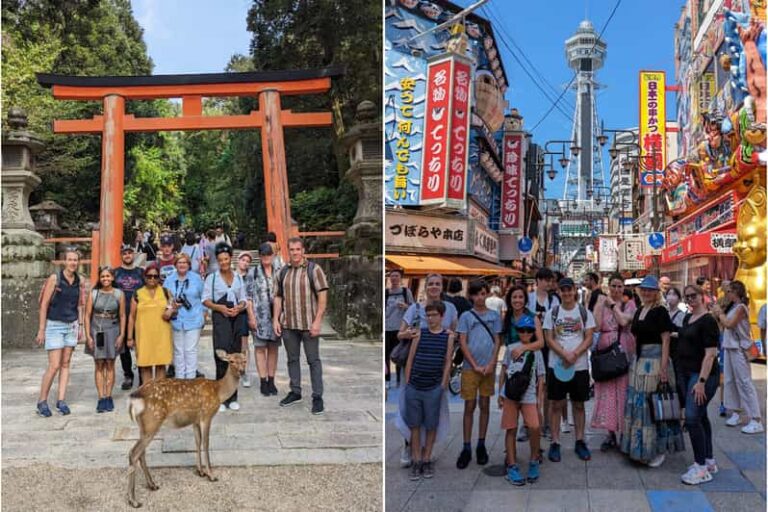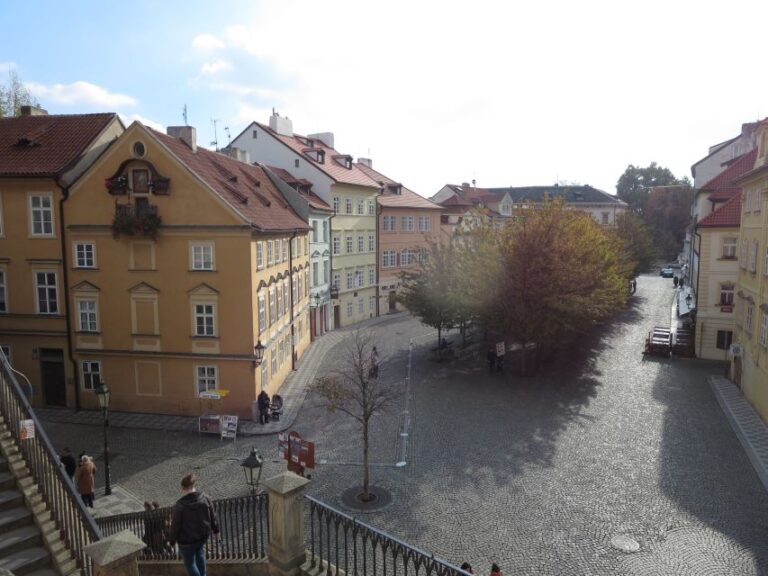Stepping into the complex history of Terezin Concentration Camp is a profound and moving experience. This private half-day tour guides visitors through the haunting grounds, shedding light on the resilience of those who endured its horrors. Under the thoughtful direction of knowledgeable experts, guests uncover the stories etched into the very walls, gaining a deeper understanding of the tragedy that unfolded within. As they explore the camp’s structures and visit the Museum of the Ghetto, a somber realization settles in – a reminder that the lessons of the past must continue to shape our present and future.
Key Points
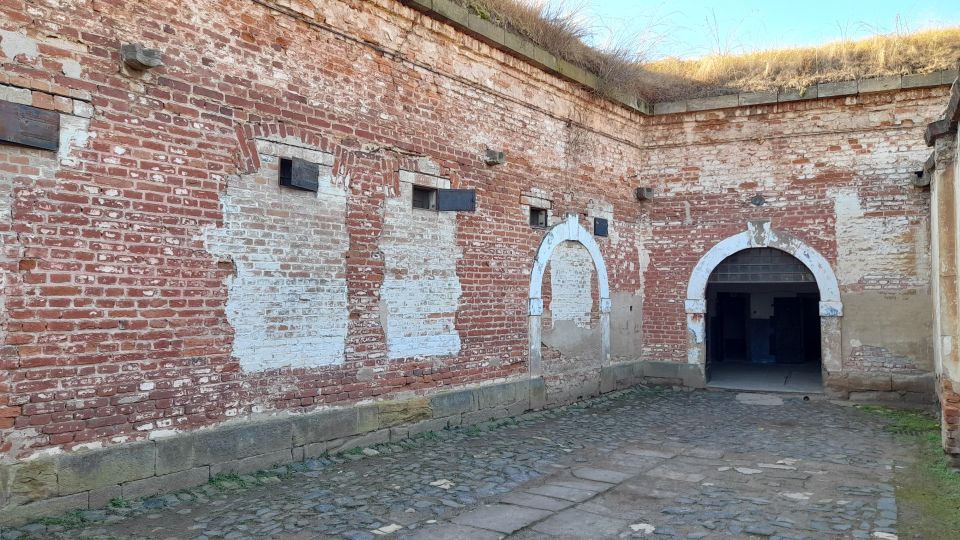
- A private half-day tour to the Terezin Concentration Camp, showcasing the historical significance of this WWII site and its impact on the Jewish community.
- Guided exploration of the Small Fortress, highlighting Nazi oppression and prisoner suffering, as well as the hidden synagogue and Magdeburg barracks.
- Immersive visit to the Museum of the Ghetto, documenting the resilience and creativity of Terezin’s Jewish inhabitants and preserving their legacies.
- Opportunity to bear witness to the horrors of the Holocaust and honor the memory of the victims, with a poignant tour of the Krematorium and mass graveyard.
- Complimentary pickup, wheelchair accessibility, and language-specific guides, ensuring a personalized and educational experience for the tour participants.
Tour Overview and Details
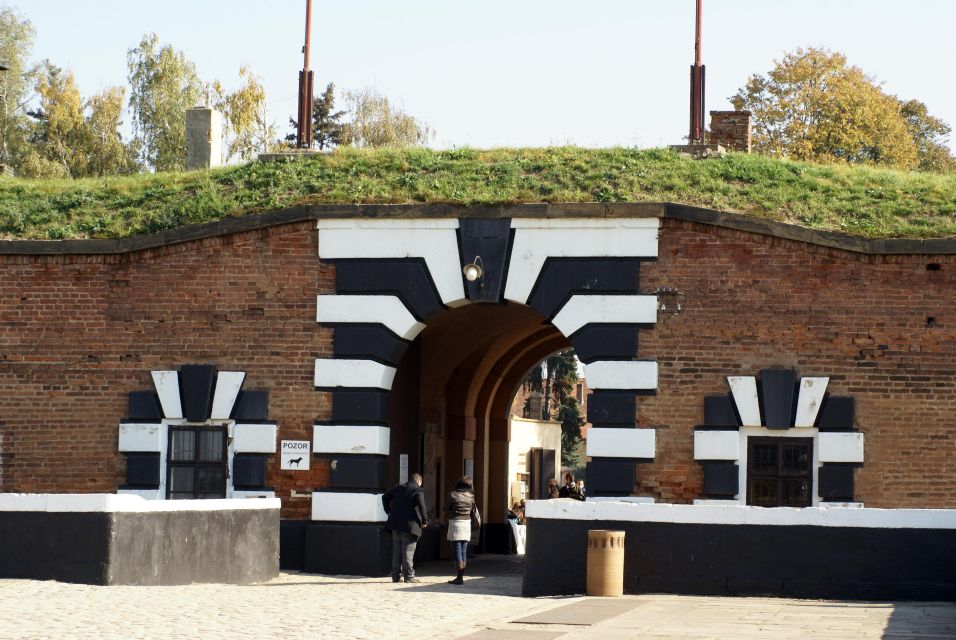
Offering a private half-day tour to the historic Terezin Concentration Camp, this experience provides visitors an immersive exploration into the site’s somber past.
Priced at $235.63 per person, the tour lasts 5 hours and includes complimentary pickup from any location.
Wheelchair-accessible and with live guides available in multiple languages, the tour ensures accessibility and personalized attention.
Guests can cancel up to 24 hours in advance for a full refund, or opt for the reserve now, pay later option.
With an impressive 4.5/5 rating, the tour is designed to be sensitive to all ages, providing a respectful yet informative experience that brings the history of Terezin to life.
Historical Significance of Terezin
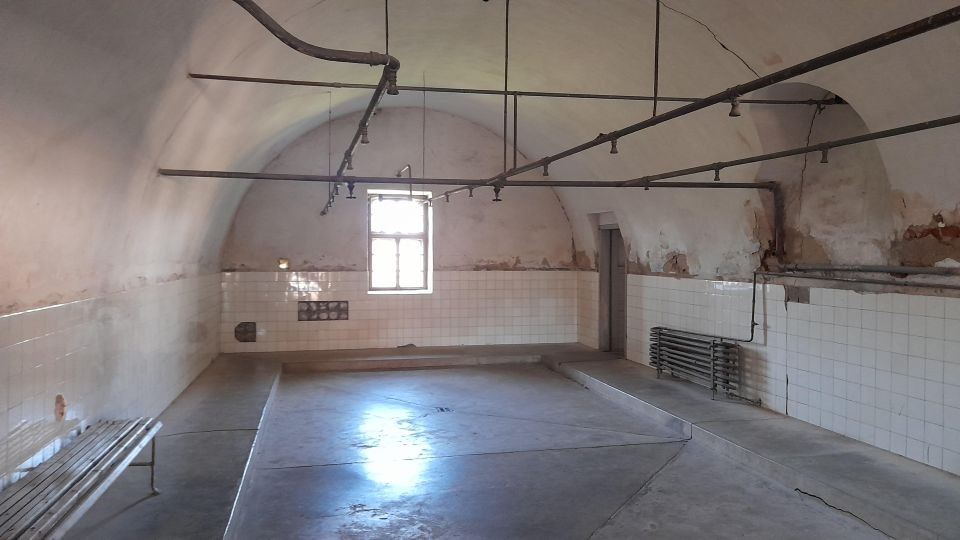
Terezin was an 18th-century military fortress converted into a concentration camp during World War II, where an estimated 155,000 Jews passed through its gates. The Big Fortress served as a Jewish ghetto, while the Small Fortress was used as a Gestapo prison, with around 87,000 of the prisoners deported to extermination camps, and only 3,600 surviving the ordeal. Tragically, approximately 35,000 people died in the ghetto, mainly from diseases and malnutrition.
The historical significance of Terezin is profound, as it serves as a sobering reminder of the horrors of the Holocaust.
The tour highlights include:
- Guided tour of the Small Fortress
- Exploration of wall tunnels and a Nazi propaganda film
- Visit to the Museum of the Ghetto
- Access to the hidden synagogue and the Magdeburg barracks
Guided Tour of the Small Fortress
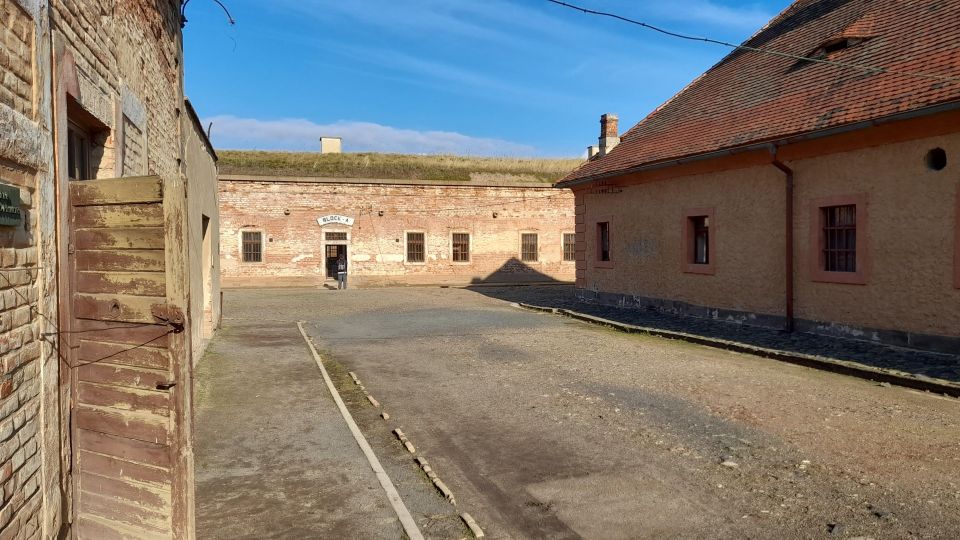
The centerpiece of the tour is a captivating guided exploration of the Small Fortress, where dark histories of Nazi oppression and prisoner suffering unfold before visitors.
Guests trace the steps of the Gestapo’s administrative court, the commander’s office, and the grim mass and solitary confinement cells that housed countless prisoners.
As they navigate the wall tunnels and the haunting shooting range, the guide shares vivid accounts of the brutality and inhumanity that defined life within these walls.
The tour provides a somber yet profound opportunity to bear witness to the harrowing realities of the Holocaust, honoring the memory of those who endured unimaginable cruelty within the Small Fortress.
Exploration of Terezin’s Structures

Beyond the Small Fortress, the tour explores the intricate structures that defined life within the Terezin Ghetto. Visitors explore the Museum of the Ghetto, where they uncover the profound impact of the Holocaust on the camp’s Jewish community, particularly through the experiences of children. Nearby, they discover the hidden synagogue, a clandestine sacred space that defied the Nazis’ ban on Jewish religious symbols.
The tour also includes:
- A visit to the Magdeburg barracks, highlighting the remarkable cultural and artistic contributions of the prisoners.
- Exploration of the wall tunnels and shooting range, grim reminders of the camp’s brutal past.
- A screening of the Nazi propaganda film shown to the International Red Cross.
- A somber stop at the Krematorium and adjacent mass graveyard, a poignant testament to the lives lost.
Visit to the Museum of the Ghetto
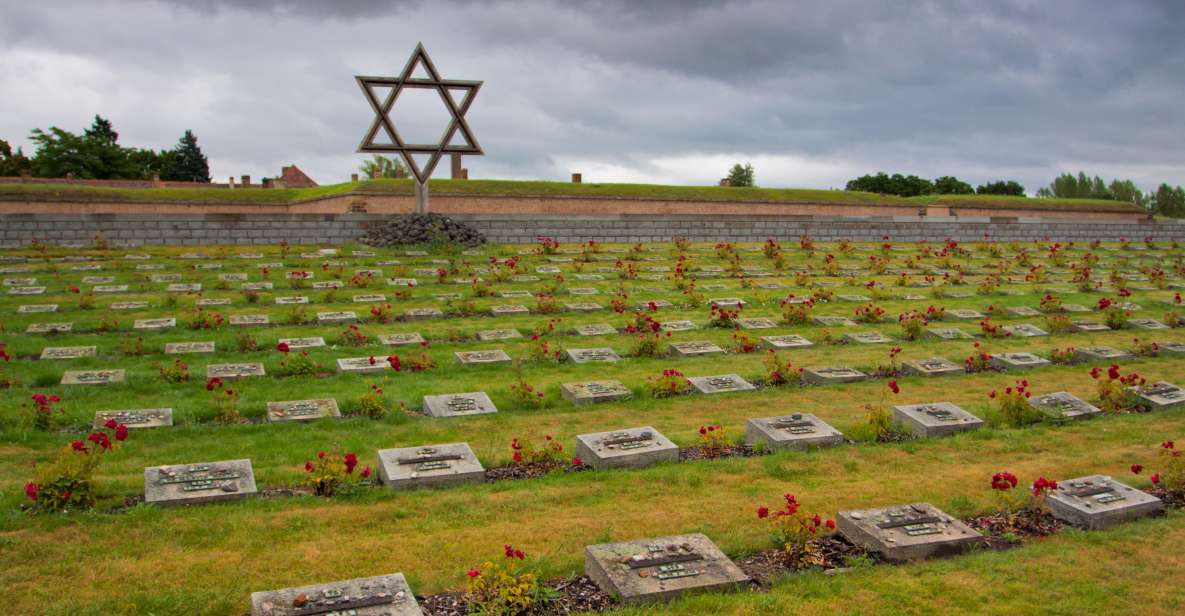
Visitors enjoy the profound history of the Jewish community within the Terezin Ghetto as they explore the Museum of the Ghetto, uncovering the deeply personal accounts and experiences of those who suffered under Nazi oppression.
The museum’s exhibits paint a poignant picture of the resilience and creativity of the ghetto’s inhabitants, showcasing artwork, writings, and artifacts that document their daily struggles and the indomitable human spirit that persisted even in the face of unspeakable adversity.
Through interactive displays and multimedia presentations, the museum provides a powerful and moving educational experience, ensuring that the stories and legacies of those who perished in Terezin are never forgotten.
Discovering the Hidden Synagogue
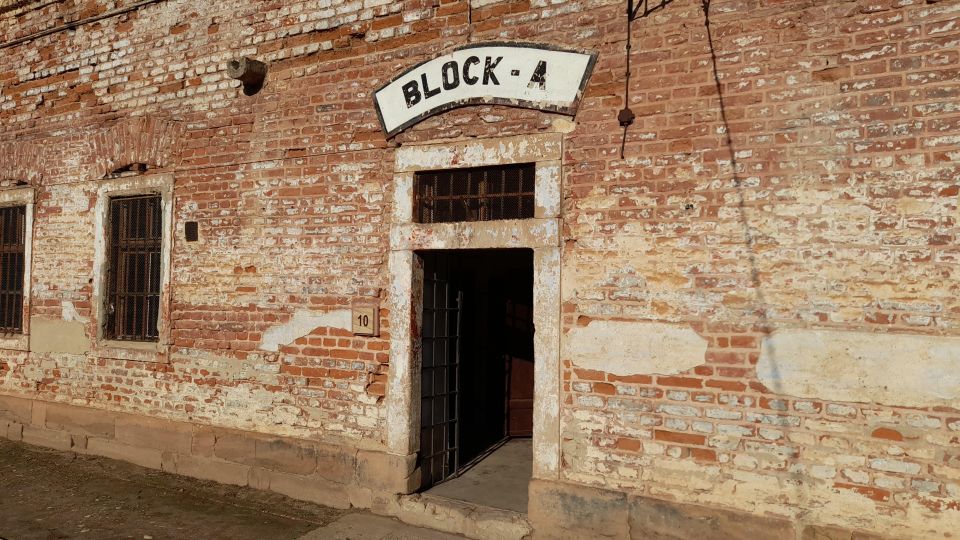
Tucked away in a nondescript storage room, the hidden synagogue stands as a testament to the unwavering faith and resilience of Terezin’s Jewish community, who maintained their spiritual practices despite the oppressive measures implemented by their Nazi captors.
During the tour, visitors are granted a rare glimpse into this sacred space, which served as a refuge for those seeking solace and connection amidst the horrors of the concentration camp.
The guide shares the powerful story of how the synagogue was preserved, highlighting:
- The ingenious concealment of the space to avoid detection by Nazi authorities.
- The dedication of the Jewish prisoners who risked their lives to keep the synagogue alive.
- The meticulous restoration efforts to preserve the synagogue’s original features.
- The profound impact the hidden synagogue had on the morale and well-being of the prisoners.
Exploring the Magdeburg Barracks

The tour then guides visitors through the Magdeburg barracks, a space that served as a canvas for the remarkable creative expressions of Terezin’s Jewish prisoners.
Here, the group will witness the vibrant artworks, plays, and musical performances that flourished despite the horrors of the concentration camp.
The guide shares the stories of accomplished artists who, even in the face of unimaginable adversity, found ways to preserve their cultural identity and humanity through their art.
Visitors are drawn into the lives and legacies of these resilient individuals, gaining a deeper understanding of how the arts became a means of resistance and a testament to the indomitable spirit of the human condition.
The Krematorium and Mass Graveyard
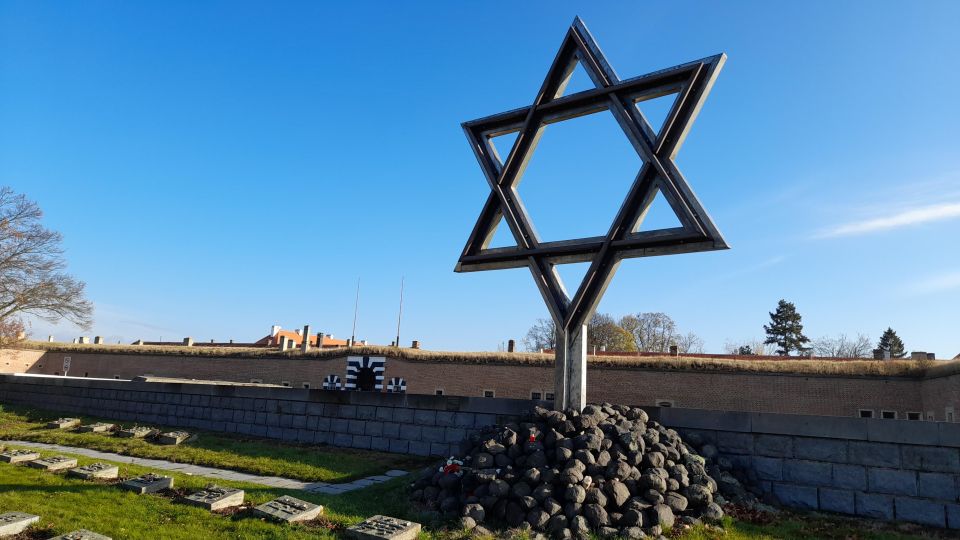
Adjacent to the Magdeburg barracks stands the Krematorium, a somber reminder of the immense tragedy that unfolded within the confines of Terezin. Constructed in 1942, this grim structure served as a crematorium, where the remains of those who perished in the ghetto were unceremoniously disposed of.
Nearby, a mass graveyard bears silent witness to the unfathomable scale of death that occurred in this place, a silent monument to the countless lives lost.
The tour guide’s somber tone reflects the gravity of the experience as they guide visitors through this harrowing site:
- The Krematorium’s austere exterior belies the horrors that took place within.
- The mass graveyard, a vast expanse of unmarked graves, serves as a poignant reminder of the lives cut short.
- Visitors are encouraged to reflect on the human cost of this tragedy and the resilience of the human spirit.
- The tour’s end is a bittersweet moment, leaving an indelible impression on all who bear witness to Terezin’s haunting history.
Frequently Asked Questions
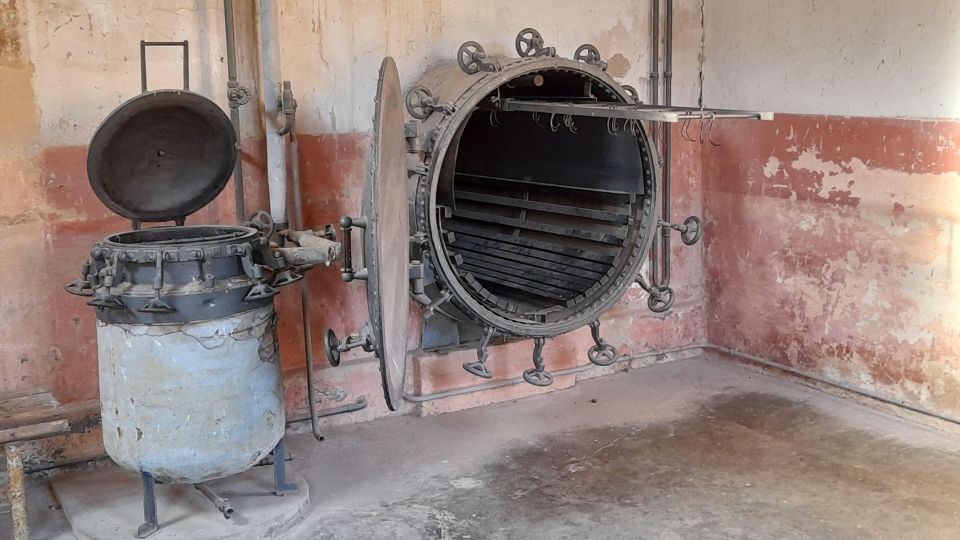
Is Photography Allowed During the Tour?
Photography is generally allowed during the tour, but visitors are advised to be respectful and avoid disrupting the solemn atmosphere. Some areas may have restrictions, so it’s best to consult the tour guide for guidance.
What Is the Dress Code for the Tour?
The tour has an informal dress code, though visitors are encouraged to dress respectfully. Comfortable walking shoes and weather-appropriate clothing are recommended, as the tour involves both indoor and outdoor elements. No special attire is required.
Can the Tour Be Customized for Individual Needs?
The tour can be customized to accommodate individual needs. The private guide is flexible and will work with participants to ensure the experience is respectful, meaningful, and tailored to their interests and requirements.
Are Audio Guides Available for Self-Exploration?
No, the tour does not provide audio guides for self-exploration. However, the private guide offers personalized insights and historical context to enhance the visitor’s understanding and experience throughout the guided tour of the Terezin Concentration Camp.
Is There an Option to Extend the Tour Duration?
Yes, the tour duration can be extended upon request. Customers have the flexibility to customize their experience, with the option to extend the tour length for more in-depth exploration of the Terezin Concentration Camp’s historical significance and memorial sites.
Recap
This poignant tour offers a profound and immersive exploration of Terezin’s dark history.
Visitors will uncover the resilience of the victims and survivors, guided by knowledgeable experts through the haunting sites of the Small Fortress, Museum of the Ghetto, and the Krematorium.
This meaningful tribute ensures the lessons of the Holocaust aren’t forgotten, leaving a lasting impact on all who embark on this powerful journey.

